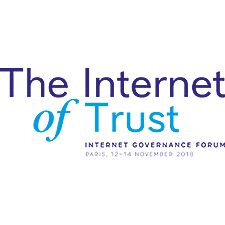5G, IoT and AI: Addressing digital inclusion and accessibility
14 Nov 2018 10:45h - 11:15h
Event report
[Read more session reports and live updates from the 13th Internet Governance Forum]
The session took the form of a round-table discussion with the aim of discussing how connectivity issues will be minimised with the introduction of new fixed and mobile technologies, such as 5G and the development of new Internet of Things (IoT) based services. The overall aim was to explore how these technologies need to be progressively introduced in all regions so that citizens can enjoy the performances and the potentialities they are bringing, in relation to an extended coverage of the population (geographical coverage), and altogether the opportunities offered by IOTs (coverage with services).
Additionally, the discussion also had the aim to provide a global view on artificial intelligence (AI) and the inclusion of debates focused on the geographic divide between the Global North and the Global South, when it comes to the future of labour, and transparent and inclusive design of new technologies.
After a brief introduction by Mr Carlos Affonso Pereira, Director at the Institute for Technology and Society (ITS), Rio, Brazil, Ms Marta Capelo, ETNO, co-moderator of the session, invited Ms Alexia Gonzalez Fanfalone, Policy Analyst and Member of the Digital Economic Policy of OECD, to give an introduction on what the issues and opportunities are when it comes to 5G and accessibility.
In a brief presentation which was to set the tone for further discussions Alexia highlighted the three beneficial features of 5G: enhanced mobile broadband, ultra reliable support for low-latency applications (critical for IoT applications) and massive machine type of M2M (more like sensors and different type of IoT).
Looking at different cases of deployment around the world, Alexia came to the conclusion that the regular core traditional issues like streamlines, rights-of-way, efficient spectrum management, access to backhaul facilities, will become even be more crucial. She called for a proactive regulator and partnership building as a means to explore the full benefits of 5G if it is to serve as a vehicle to increase accessibility.
Mr Mongi Morzoug, Orange Telecom, shared his view on the topic started with the main policy options for increasing connectivity identified by the IGF. These are deploying infrastructure, increasing usability, protecting the rights of users, ensuring affordability to the Internet and the enabling environment for making access universal.
Marzoug further went on to state that 5G will bring more opportunities when it comes to connectivity especially for emerging markets that Orange operates, since these markets are mobile dominated. It will greatly enhance the user experience of consumers.
Speaking from the viewpoint of the regulator, Mr Juan Manuel Wilches Duran, Commissioner, Commission for Communications Regulation in Colombia (CRC), said that the regulator’s role in advancing 5G deployment is to think about how to become more of a promoter of the digital development and digital transformation of their countries. Instead of trying to regulate or to impose charges or rules on telecom providers the regulator should rather collaborate with the providers to harness the benefits of 5G.
Ms Smitha Krishna, Project Leader at National Law University, India, talked on how AI can help with inclusion. She mentioned that the current problem is that when AI comes up the developed countries in the Global North, it appears to be leading the discussions and the development. According to her, this was so because the technology is developed in these countries. Her recommendation was to ensure that there is a greater representation from the Global South, as much as the Global North on the AI debates, as well as ensuring that the technologies are also built in the Global South.
Mr Christian Djefall, Civil Society, Western European and Others Group (WEOG), gave his perspective on AI and pointed out that there must be a unified organisation championing and moving forward discussions, since multiple discussions of the same topic do not really help to better engage. Another view was to ensure that AI discussions are engaged using the multi-stakeholder model to ensure that people from different communities engage on the topic at the same time to capture all the perspectives in order to better shape its adoption.
Mr Eduardo Magran, ITS Rio, speaking on AI from the Brazilian perspective said that we need to think of bridging the connectivity gap when it comes to AI. He also focused on design saying that human behaviours are guided by technologies and so AI should have a human-centred design in other to drive behaviours of usage and accessibility. Lastly, he also touched on the fact that the designs should ensure that the rights of people, especially privacy issues, are protected.
Questions invited from the audience were addressed by the panellists after which the meeting came to a close.
By Jacob Odame – Baiden
Related event

